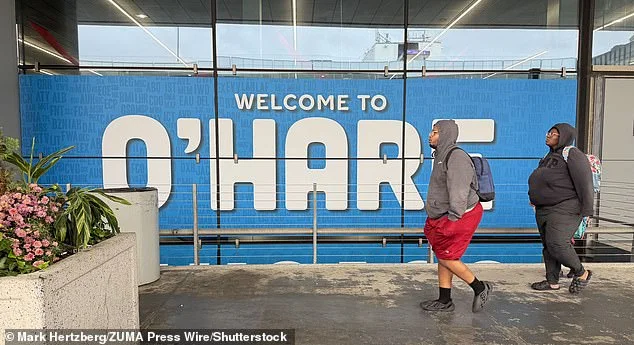Chicago O’Hare International Airport, one of the busiest travel hubs in the United States, came to a standstill on Saturday morning after the Federal Aviation Administration (FAA) announced an emergency ground stop.
The sudden halt, caused by a staffing crisis linked to the ongoing government shutdown, left passengers stranded and frustrated as delays continued to ripple across the country.
Flights Frozen on the Ground
The FAA confirmed that the ground stop began at 11:24 a.m. and was expected to continue until at least 12:45 p.m., as flight delays steadily mounted past the 15-minute mark.
In aviation terms, a “ground stop” means that planes are temporarily held at their departure airports to prevent the air traffic network from becoming overloaded.
Ordinarily, such measures are brief — typically lasting under half an hour — and are triggered by severe weather or technical malfunctions.
But this time, the problem had nothing to do with storms or radar systems.
The real issue was a shortage of air traffic control staff, brought on by the prolonged government shutdown now entering its 39th day.
Nationwide Ripple Effect
This grounding in Chicago came on the heels of a chaotic Friday that saw more than 1,000 flights cancelled nationwide, including 100 in Chicago alone.
According to FlightAware.com, over 1,300 flights had already been scrapped by Saturday afternoon, with 83 cancellations and over 300 delays reported at O’Hare.
The FAA said that staffing shortages were now affecting 40 major airports across the country — a crisis that has forced it to scale back service levels to maintain safety.
The strain has been particularly visible in Chicago, which serves as one of the country’s largest domestic connection hubs.
FAA Sounds the Alarm
In a public statement earlier this week, the FAA admitted that the system was approaching its breaking point.
Officials warned that unpredictable staffing levels and mounting fatigue among controllers were creating unsafe conditions.
“With continued delays and unpredictable staffing shortages, which are driving fatigue, risk is further increasing,” the FAA said on Wednesday.
“The system’s ability to maintain the current volume of operations is now in question.”
This comes as the agency struggles to keep up with flight demand while many of its air traffic controllers remain furloughed or overworked — some working extended shifts without pay.
White House Pressure Mounts
Transportation Secretary Sean Duffy addressed reporters on Friday, warning that flight cancellations could jump to 20 percent nationwide if the shutdown isn’t resolved soon.
He called the situation “unsustainable,” stressing that the government’s inaction was now directly affecting millions of travelers and the nation’s air safety.
Meanwhile, the Trump administration has been publicly urging Democrats to return to the negotiating table to reopen the government.
The standoff, now the longest in U.S. history, has stretched nearly six weeks — surpassing the 35-day shutdown from Trump’s first term, which also ended amid mounting flight disruptions and public pressure.
Passengers Face Mounting Frustration
As delays piled up, travelers at O’Hare were left stranded in terminals, staring at flickering departure boards filled with cancellations.
Many passengers expressed confusion and anger, unsure whether they would reach their destinations at all.
According to the Department of Transportation, airlines must issue full refunds for any cancelled flights, but they aren’t required to cover food, lodging, or alternative travel costs unless the cancellation was due to a factor under their control — meaning many stranded passengers will be on their own.
A System Under Strain
The staffing crisis has reached a critical point.
Between Friday and Sunday of last week, 39 air traffic control facilities across the U.S. reported potential understaffing, according to internal FAA data reviewed by the Associated Press.
Many controllers have been working exhausting hours with reduced backup, raising fears of burnout and safety risks.
This latest wave of travel disruptions is a reminder of how deeply the shutdown has affected not just government workers but ordinary Americans trying to travel, work, or return home.
Uncertain Days Ahead
For now, Chicago O’Hare’s ground stop has been lifted, but the broader situation remains fragile.
With thousands of workers still furloughed and political negotiations stalled in Washington, experts warn that air travel could see even greater disruptions in the coming days.
As one weary passenger summed it up while waiting in line at O’Hare: “You don’t expect politics to stop planes from flying — but here we are.”
